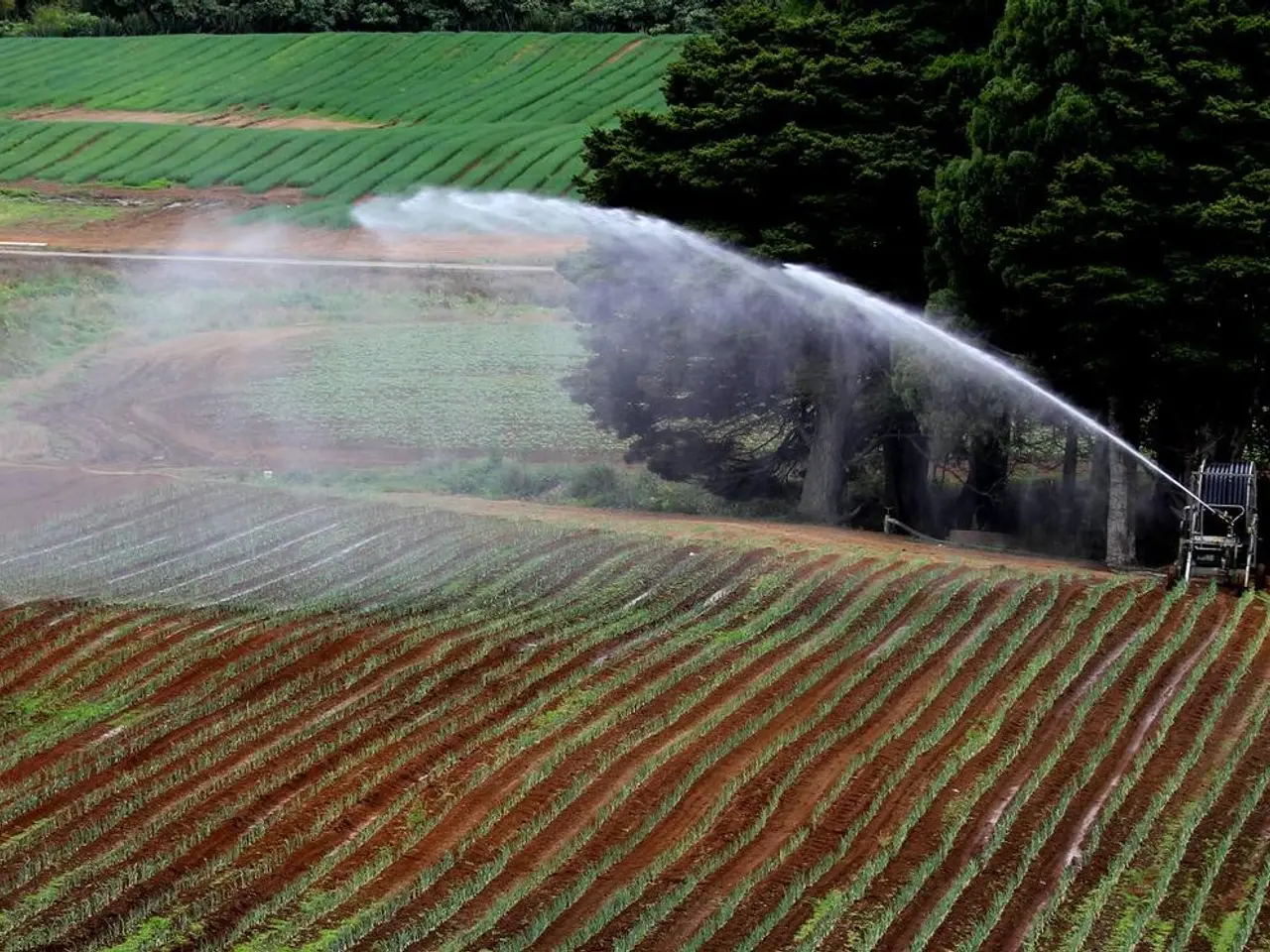Ensuring the reliability of irrigation systems: strategies to prevent breakdowns.
A well-maintained irrigation system is the key to a healthy landscape and efficient water usage. Here are some best practices for maintaining your irrigation system to prevent breakdowns and ensure its longevity.
Regular inspections are crucial to catch issues early. Check for leaks, cracks in pipes, broken sprinkler heads, and leaking valves. Cleaning sprinkler heads, nozzles, and filters is also essential to remove dirt, sediment, and mineral deposits that can clog the system and reduce efficiency.
Testing and adjusting valves individually is important to ensure they open and close properly. Replace or repair any worn components promptly to keep the system running smoothly.
Checking for even water coverage is vital to avoid dry spots or runoff. Observe sprinklers in operation and adjust heads as necessary to ensure uniform water distribution.
Monitoring and adjusting watering schedules according to seasonal needs and local weather conditions is essential. Watering during early morning or late evening hours helps minimize evaporation and targets watering at the root zone to prevent plant diseases and water waste.
Inspecting electrical connections and controllers is also important to prevent programming errors and ensure reliable operation. Updating controller firmware is recommended to maintain optimal performance.
Using pressure regulators or booster pumps helps maintain optimal water pressure for system longevity and effectiveness. Flushing the irrigation lines periodically removes debris and prevents blockages, especially important with increased operating hours or after long idle periods.
Scheduling seasonal services such as winterization to prevent freeze damage and spring startups to ensure clean and operational systems is advisable. Maintaining a detailed log of inspections, repairs, and system performance helps track issues over time and supports warranty claims or service contracts.
Installing rain sensors can optimize water consumption and prevent unnecessary irrigation in case of rain. Choosing quality materials for the irrigation system increases its lifespan and its ability to withstand environmental stresses.
A well-designed irrigation system with quality components lasts longer. However, even the best systems require regular maintenance to avoid breakdowns. Performing periodic system tests, at least once a month, helps prevent breakdowns and ensures the system operates efficiently.
Following these practices can save water, extend the system’s lifespan, reduce costly emergency repairs, and help maintain a healthy landscape. Routine inspections at least once or twice per year are recommended to catch early signs of wear or malfunction. A proactive maintenance schedule combining cleaning, inspection, testing, adjustment, and seasonal care is key to preventing breakdowns and ensuring irrigation efficiency.
Keeping up with news regarding home improvement and home-and-garden maintenance can provide insights on the latest irrigation system practices. To maintain a healthy landscape efficiently, regular inspections of your irrigation system should include checking for issues like leaks, broken sprinkler heads, and leaking valves, as well as cleaning sprinkler heads, nozzles, and filters.




